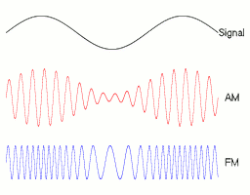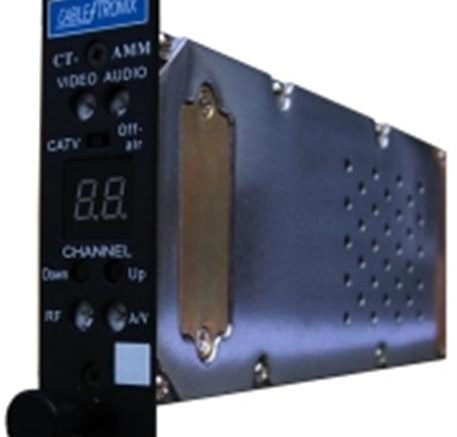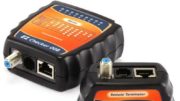Unless you’re in a commercial building or a hotel, you probably don’t think about modulators. In fact if you think of them at all you probably think back to your old game system. You used a device back then called an “RF Modulator” that put the output from the game system on channel 3. This was sort of mandatory if your TV didn’t have A/V inputs and a lot of them back then didn’t.
Modulators are still around but they’ve grown up and gotten a lot fancier.
What is modulation?
In order to understand what a modulator is, you have to understand what it does. A modulator, well, modulates. When you look at an unaltered video and audio signal, it travels through a wire in such a way that nothing else can travel on that wire. We call this baseband video. Modulation is a trick that takes this signal and only lets it occupy a portion of the “space” on a wire.
Let’s dig in a little further.
Modulation is a trick that lets you put more than one signal on a wire or over the air. Without it there would only be one TV station. The problem is that even with the best diagrams, it’s hard to explain. The best way I can think of is if you think about music. When you hear a song you’re taking in the whole song, but if you have a trained ear you can listen to just the drums or just the vocals. If you concentrate hard enough you can mentally block out everything else. Now, if you were a robot you could concentrate so well that nothing else would even enter your mind.
In essence, that’s modulation. We take a bunch of different signals and we do something special to each one of them, something that makes it stand out. If we go back to the song analogy, one would be the sound of the drums. One would be the sound of the lead guitar. One would be the lead singer.
Different kinds of modulation
When you’re talking about modulating a video or audio signal it’s done using a carrier. We take the basic signal and we mathematically add it or subtract it to a much more basic signal. This way the whole signal stays intact and you can have as many different signals as you have carriers. Each one doesn’t interfere with the others because they are all on different carriers.
Two of the easiest forms of modulation are amplitude modulation and frequency modulation. With amplitude modulation (AM) you make the carrier wave taller or shorter to add a signal to it. With frequency modulation (FM) you make the wave slower or faster to add a signal to it. This is pretty easy to visualize, thanks to this gif from Wikipedia.

Unfortunately AM and FM, as easy as they for humans to understand, aren’t really that efficient. When you need to get a lot of really large signals onto a wire, you need to use quadrature amplitude modulation (QAM) which uses two carrier waves and the kind of math that normal humans don’t have a chance of understanding. It all gets visualized in sort of a constellation that looks like this, (again, thanks Wikipedia.)

This constellation can represent any combination of numbers from 1 to 16 which is enough to carry about a fourth of the information needed for a full video and audio signal.
What’s the real world use of a modulator?
Modulators are used in the real world to place multiple audio and video streams on the same wire. This is done to make it easier to get them from one point to another. For example a hotel would use modulators to put the output from 32 satellite TV boxes on one wire so it’s easy for you to choose the channel you want from your room. Each signal has its own modulator, and each signal ends up taking a small bit of space on a single cable. In this way you can have several hundred channels on one cable if you wanted.
You can’t talk about modulators without…
…talking about encoders. Generally a modulator and encoder are built into the same box. The modulator is the part that puts the signal on the wire, but generally in order to get to that point it first must be encoded.
If you were to look at a pure, uncompressed HD signal it would take up about 2.2 gigabytes per second. That’s a humongous amount of space and you wouldn’t be able to modulate it very effectively. If you’re going to fit 100 or more channels on a wire you need each one to be about 6-10 megabits per second or smaller. That’s where encoders come in.
An encoder uses extremely fancy math to take the important parts of a signal and compress them down. The unimportant parts, like details you would never see, are discarded. In this way the signal can be compressed small enough that it fits where you need it to fit, and the modulator can do its work.
The best thing about modulators and encoders
You don’t really need to understand the extremely complex math involved in compressing and tailoring a signal and then placing it within a predefined frequency range to know that it works. The important thing is that it does work. Generally speaking you connect your video and audio signal to a modulator/encoder, you say what channel you want it to end up on, and it just works. Then, you combine the outputs of all the modulators onto one wire. If each modulator uses a different channel then none of them interfere with each other. At the other end, the viewer chooses a channel, and the TV demodulates and decodes the signal, then displays it.
If you’re looking for a modulator or any other sort of commercial video system, check out the great selection at SolidSignal.com.





